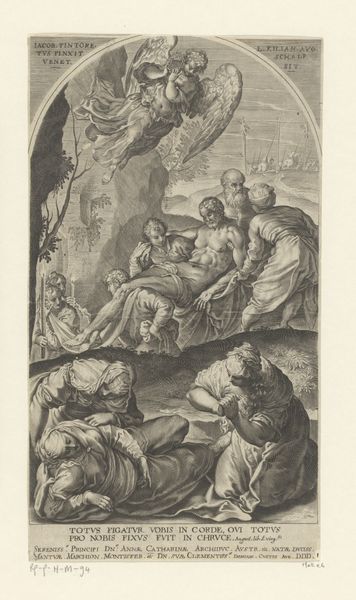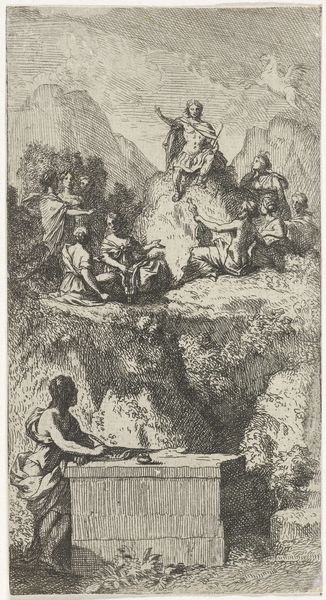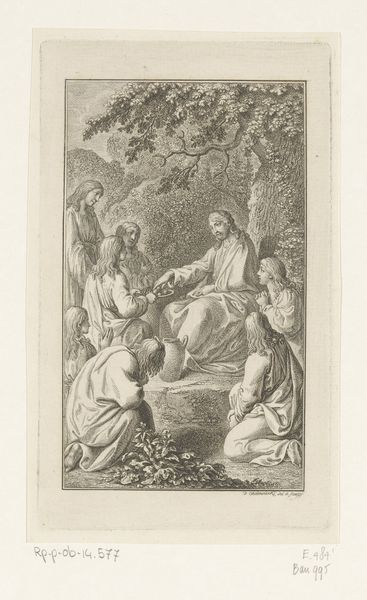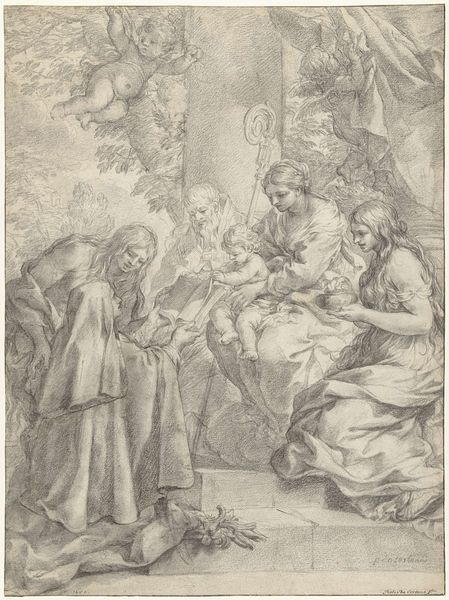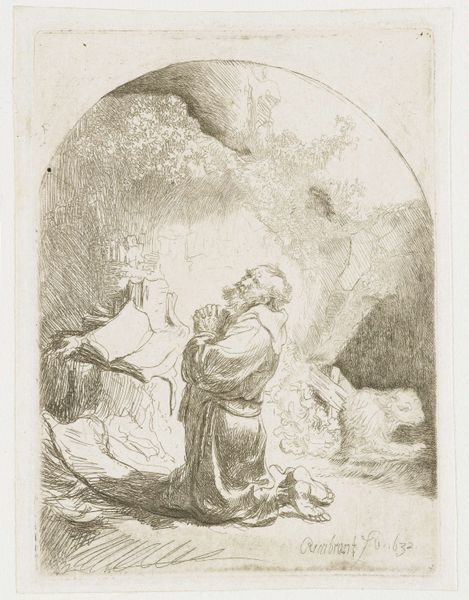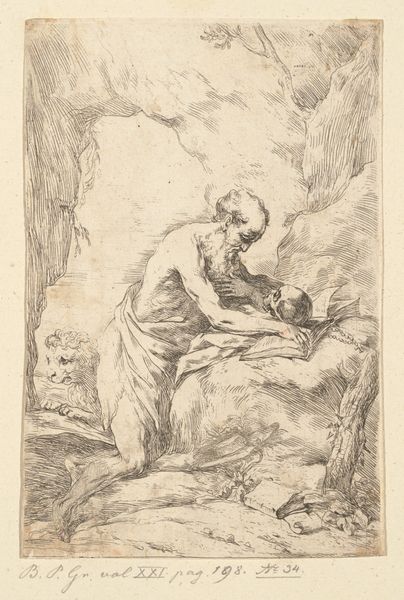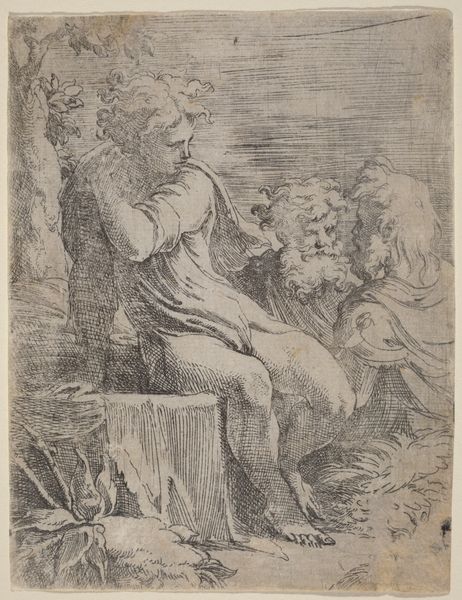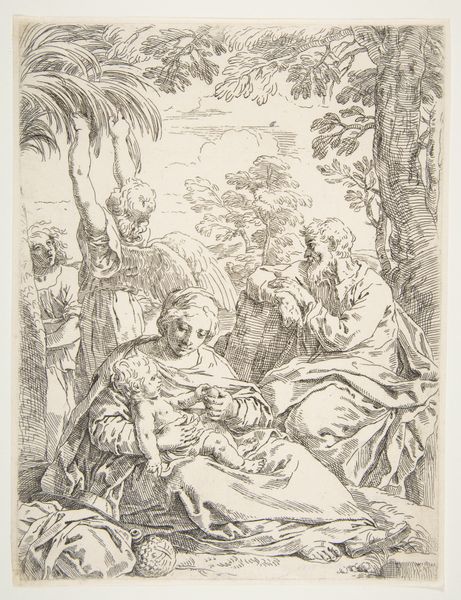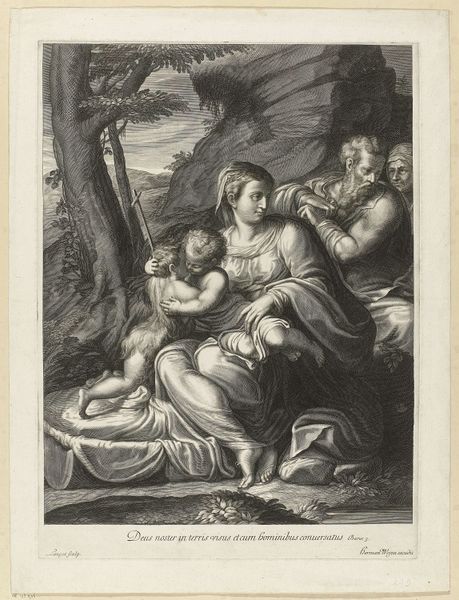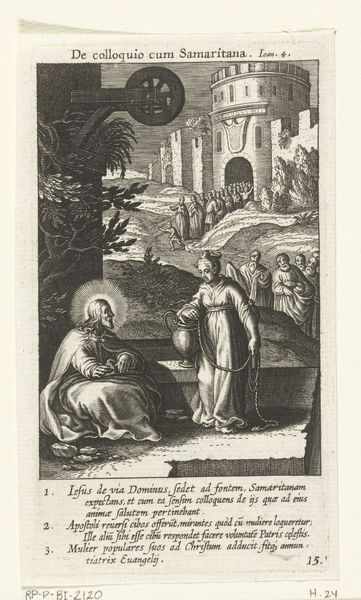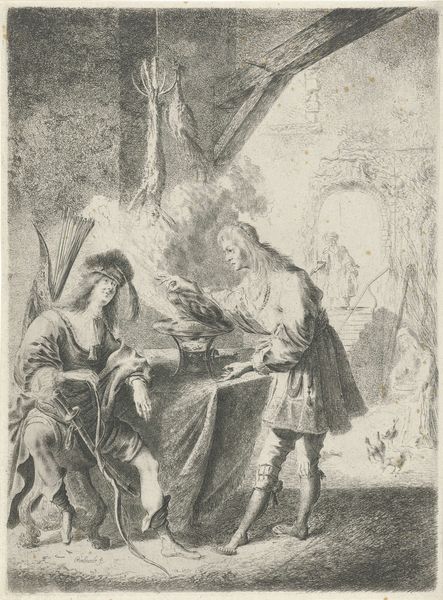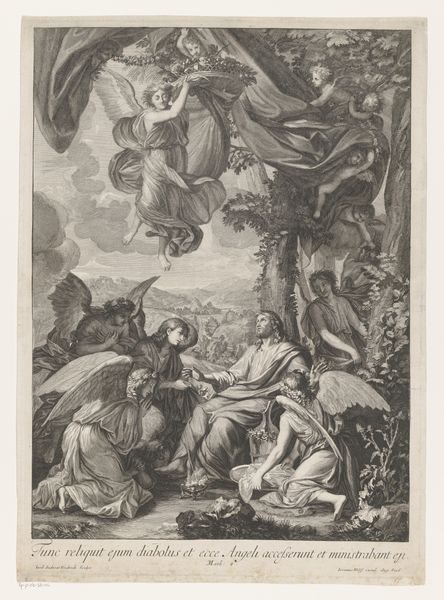
drawing, ink, engraving
#
portrait
#
drawing
#
ink drawing
#
allegory
#
narrative-art
#
baroque
#
pen illustration
#
pen sketch
#
pencil sketch
#
ink
#
chiaroscuro
#
history-painting
#
engraving
Dimensions: height 225 mm, width 145 mm
Copyright: Rijks Museum: Open Domain
Curator: The texture! The entire image shimmers. Before us is Jan de Bisschop’s “Hieronymus als boeteling,” or “Jerome as a Penitent,” executed between 1668 and 1671. Editor: It’s intensely devotional, steeped in drama. You see it instantly – the almost theatrical presentation of penitence. The composition is incredibly busy. Is it an ink drawing? Curator: Indeed. The stark contrast between light and shadow amplifies the emotional intensity, typical of Baroque aesthetics. Look at how the ink hatching sculpts the forms of Saint Jerome, making his gaunt figure both physically present and spiritually exposed. What about Saint Jerome draws your eye? Editor: I am drawn to the presence of labor: Bisschop meticulously recreated and circulated etchings after old masters; his skilled hand worked tirelessly, transforming reproductive printmaking into high art by exploring the limits and expressive power of cheap material. Is that lion significant to the iconography of penance here? Curator: Absolutely. The lion symbolizes Jerome’s scholarship and also refers to a legend where Jerome removed a thorn from a lion’s paw, and the lion became his loyal companion. Here, its placid nature embodies the peace achieved through repentance. I see this drawing as an eloquent articulation of humility. He extends a stone... Editor: Almost like a tangible object of shame or the sheer weight of life bearing down. His open stance emphasizes a vulnerable supplication. It all converges around a powerful display of materiality transformed into the most powerful representation of human emotion. Curator: So it is. In summary, Bisschop shows a figure embedded in symbolism of knowledge, humility and, finally, redemption. Editor: It demonstrates just how seemingly humble materials like ink on paper can manifest complex and profoundly emotional reflections.
Comments
No comments
Be the first to comment and join the conversation on the ultimate creative platform.

